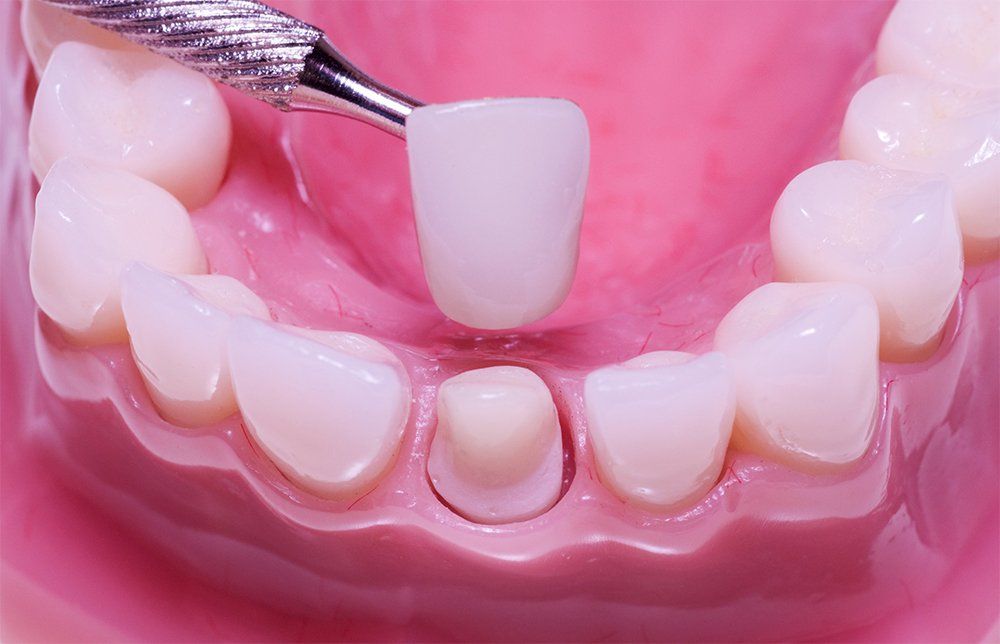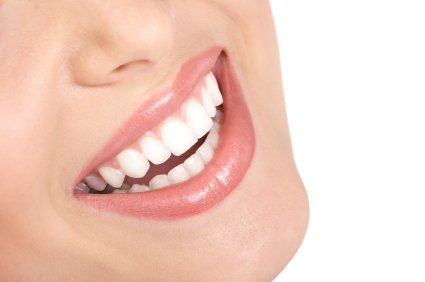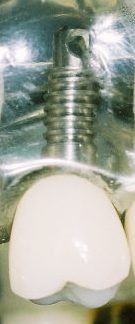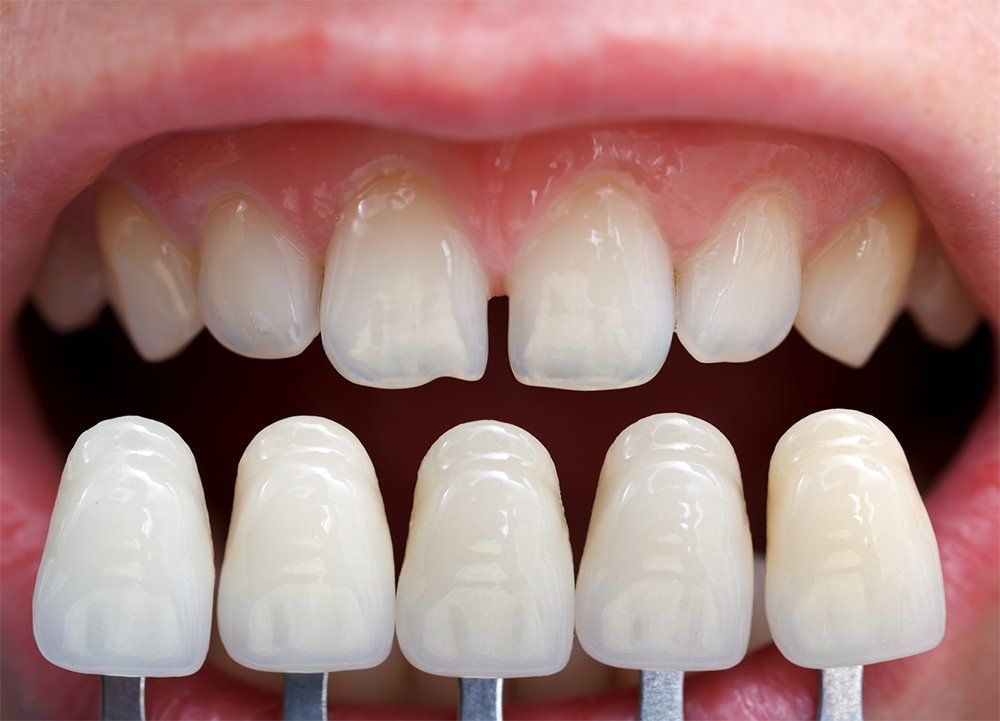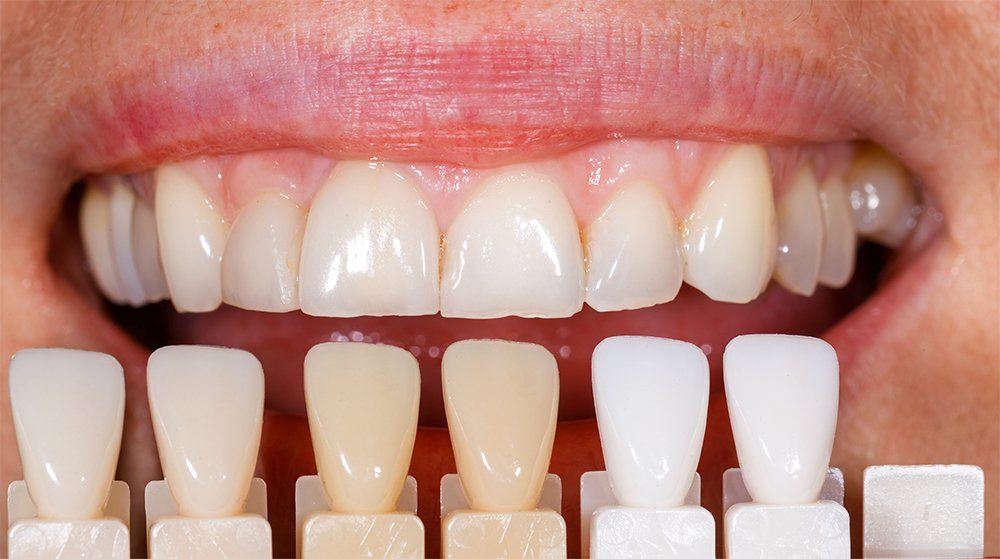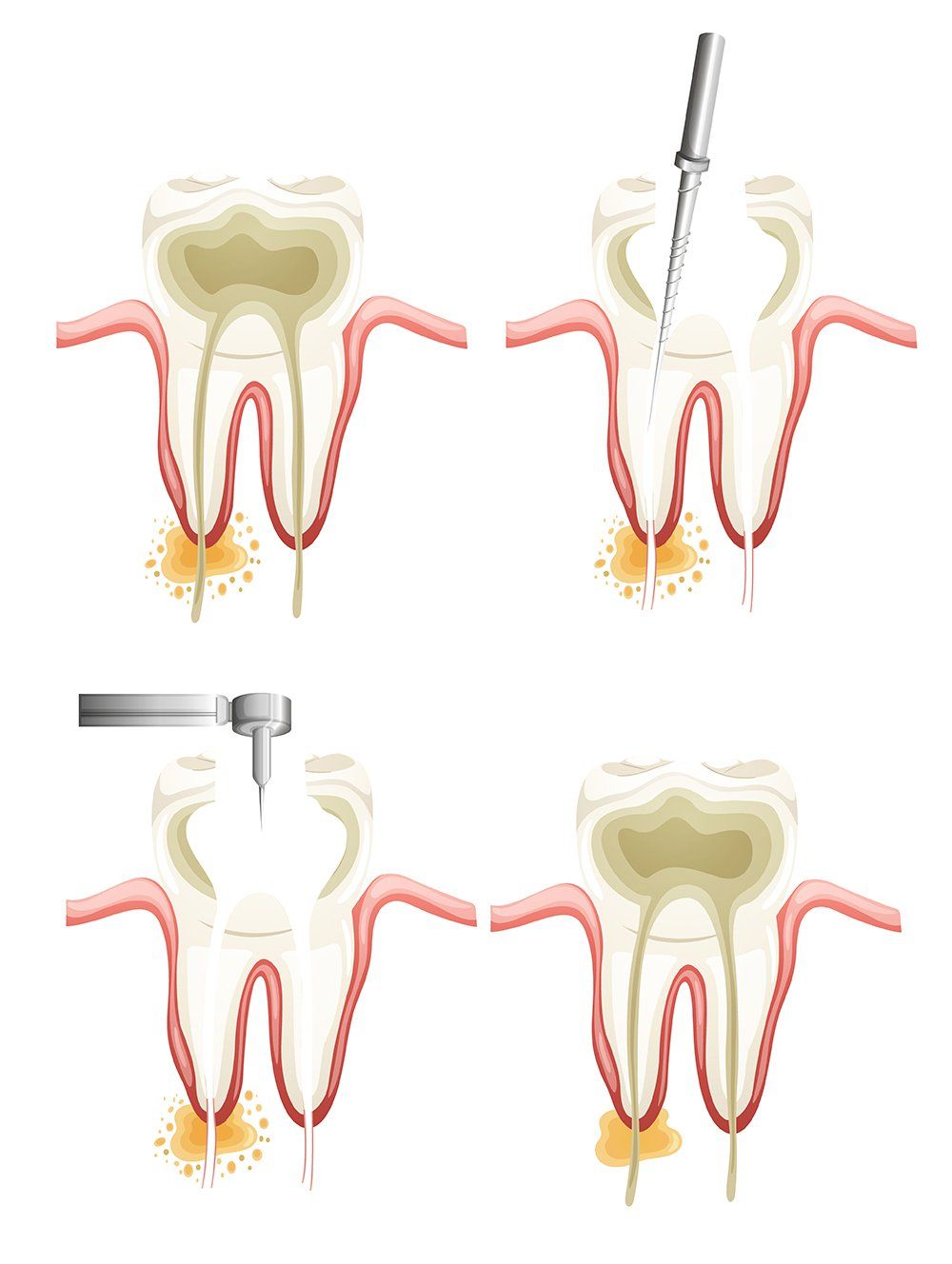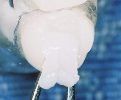PATIENT BROCHURES
PATIENT BROCHURES
Dental Crowns
A crown (cap) is a restoration that is placed on teeth that have lost a lot of their structure. There are many different types of crowns, full porcelain, porcelain fused to metal, full metal crowns... Your dentist will explain the advantage and disadvantage of each kind for you.
The process of making a crown includes many steps that start in our office with preparing the teeth and taking impressions from the tooth/teeth involved. Then a temporary crown or bridge is placed on your teeth.
The impressions are sent to the lab. In the lab a mold of the teeth is poured and the work begins.
There are multiple steps and different technicians work on the mold to fabricate a crown or bridge. The completed work is sent back to the office and after necessary checks and adjustments it is cemented onto your teeth.
The process of making a crown includes many steps that start in our office with preparing the teeth and taking impressions from the tooth/teeth involved. Then a temporary crown or bridge is placed on your teeth.
The impressions are sent to the lab. In the lab a mold of the teeth is poured and the work begins.
There are multiple steps and different technicians work on the mold to fabricate a crown or bridge. The completed work is sent back to the office and after necessary checks and adjustments it is cemented onto your teeth.
Teeth Whitening
Teeth stain during our lifetime due to consumption of a variety of foods and drinks (Coke, spicy food, coffee...) New technology of teeth whitening has enabled dentists to whiten teeth without any change or damage to the tooth structure.
Almost all the whitening methods are similar in concept but some are much more effective because of the way the whitening material is delivered to the teeth. The other factor in effectiveness of the method is the concentration of material, which is the reason why over the counter whitening systems usually don t give patients the result they are hoping for.
The two main methods of professional whitening are tray whitening and in office whitening. Tray whitening is when a custom tray is made for the patient after an impression is taken, then a supply of whitening gel is given to the patient and he/she will wear the tray for a few hours a day (techniques differ) for a period of time until an acceptable result is achieved. Sensitivity of the teeth is a normal complication of this method of whitening and is almost always transitional.
In office whitening on the other hand is the most effective method of whitening. There are a few different ways that are available for example, Britesmile, Zoom, Laser whitening....But in all these methods the process is similar and you can have your teeth whitened in one session with great results. Your dentist can give you more detailed information and tell you which method is more suitable in your case and which one is indicated for your teeth.
Almost all the whitening methods are similar in concept but some are much more effective because of the way the whitening material is delivered to the teeth. The other factor in effectiveness of the method is the concentration of material, which is the reason why over the counter whitening systems usually don t give patients the result they are hoping for.
The two main methods of professional whitening are tray whitening and in office whitening. Tray whitening is when a custom tray is made for the patient after an impression is taken, then a supply of whitening gel is given to the patient and he/she will wear the tray for a few hours a day (techniques differ) for a period of time until an acceptable result is achieved. Sensitivity of the teeth is a normal complication of this method of whitening and is almost always transitional.
In office whitening on the other hand is the most effective method of whitening. There are a few different ways that are available for example, Britesmile, Zoom, Laser whitening....But in all these methods the process is similar and you can have your teeth whitened in one session with great results. Your dentist can give you more detailed information and tell you which method is more suitable in your case and which one is indicated for your teeth.
Dental Implants
During the last 20 years dental implants have become a great alternative to other methods of replacing missing teeth. Excellent success rates and a variety of available options give dentists many new ways to treat and replace lost teeth.
Your dentist will be able to evaluate your case and tell you if you are a candidate for dental implants. Basically, a dental implant is a Titanium based cylinder that replaces the missing tooth root. After a period of time and when the implant is taken other parts will be placed on the implant that enables your dentist to eventually place a crown (cap) on the implant.
Implants also can be used to support full or partial dentures. They dramatically improve the denture retention and stability.
Most patients with enough amount of bone can have implants, although individual decisions are made between you and your dentist. Usually an x-ray and a CT-scan is done to determine if you have enough bone to place the implant and also to determine the size and kind of the implant that should be placed.
Your dentist will be able to evaluate your case and tell you if you are a candidate for dental implants. Basically, a dental implant is a Titanium based cylinder that replaces the missing tooth root. After a period of time and when the implant is taken other parts will be placed on the implant that enables your dentist to eventually place a crown (cap) on the implant.
Implants also can be used to support full or partial dentures. They dramatically improve the denture retention and stability.
Most patients with enough amount of bone can have implants, although individual decisions are made between you and your dentist. Usually an x-ray and a CT-scan is done to determine if you have enough bone to place the implant and also to determine the size and kind of the implant that should be placed.
Veneers & Laminates
This is how you can get a beautiful smile quickly. Veneers or Laminates are a thin shell of porcelain or resin that is bonded to the surface of the teeth to change their shape, shade and position to improve the cosmetics of your teeth and smile and/or replace and restore the lost tooth structure where it is indicated
Your dentist will do a complete examination of your teeth and will determine if veneers are indicated for you. Usually with veneers it is possible to improve the esthetics of your teeth and smile dramatically.
Veneers can improve the shape of your teeth, make your teeth as white as you want and give you the smile you have always wanted. Veneers are bonded to your tooth structure, which gives them strength.
Also because they are very thin, they are considered one of the most conservative cosmetic treatments available. Most of the times very little or no tooth structure is removed before placing veneers. Ask your dentist how veneers can improve your smile.
Your dentist will do a complete examination of your teeth and will determine if veneers are indicated for you. Usually with veneers it is possible to improve the esthetics of your teeth and smile dramatically.
Veneers can improve the shape of your teeth, make your teeth as white as you want and give you the smile you have always wanted. Veneers are bonded to your tooth structure, which gives them strength.
Also because they are very thin, they are considered one of the most conservative cosmetic treatments available. Most of the times very little or no tooth structure is removed before placing veneers. Ask your dentist how veneers can improve your smile.
Root Canal Treatment
Every tooth consists of three different layers. From the outside, first there is Enamel (the outer layer of the teeth which is the hardest part of the body). The second layer is Dentin (the inside hard layer) and then we have the Pulp (which is an empty space where the live tissue and nerve of each tooth is located)
If for any reason the pulp space is exposed to the outside, the tissue becomes contaminated and eventually infected. The exposure of pulp happens in many circumstances for example when you have a large cavity, or a fractured tooth. Your dentist can explain the exact reason for damage to this tissue. Regardless of the reason for this contamination or damage to pulp tissue, the treatment is usually Root canal treatment.
Root canal treatment is the process of going inside the pulp space and removing the infected and dead tissue. Then the space is disinfected and sealed with special materials.
Now-a-days, root canal treatments are performed with advanced techniques and material and are more comfortable and faster. After root canal treatment is done your restorative dentist will usually place a crown on you tooth to protect it against fracture.
If for any reason the pulp space is exposed to the outside, the tissue becomes contaminated and eventually infected. The exposure of pulp happens in many circumstances for example when you have a large cavity, or a fractured tooth. Your dentist can explain the exact reason for damage to this tissue. Regardless of the reason for this contamination or damage to pulp tissue, the treatment is usually Root canal treatment.
Root canal treatment is the process of going inside the pulp space and removing the infected and dead tissue. Then the space is disinfected and sealed with special materials.
Now-a-days, root canal treatments are performed with advanced techniques and material and are more comfortable and faster. After root canal treatment is done your restorative dentist will usually place a crown on you tooth to protect it against fracture.
Root Canal Re-treatment
When a root canal treatment fails, the first course of action that is usually taken is trying to re-do the root canal treatment. It is usually done by an Endodontist (root canal specialist) or an experienced general dentist
The process is very similar to Root canal Treatment, the difference is that besides taking any remaining infected tissue out, the doctor has to take old filling material, any posts and crowns or any other obstacle in the pulp space out to be able to successfully disinfect and seal the area of the root canal.
After the root canal treatment is done your restorative dentist will place a crown to protect the tooth against fractures.
The process is very similar to Root canal Treatment, the difference is that besides taking any remaining infected tissue out, the doctor has to take old filling material, any posts and crowns or any other obstacle in the pulp space out to be able to successfully disinfect and seal the area of the root canal.
After the root canal treatment is done your restorative dentist will place a crown to protect the tooth against fractures.
Inlays & Onlays
Inlays or onlays are lab made restorations that are placed on teeth when the cavity or lost tooth structure is too large to be restored by a simple filling. The process of making an Inlay is very similar to a crown. After the tooth is prepared it is cemented or bonded to the tooth
There are different materials that inlays are made of, gold, porcelain and composite resins are among them. Porcelain and composite inlays and onlays are cosmetic alternatives to fillings and are very strong compared to regular white fillings. Gold inlays and onlays are also good alternatives but their appearance has made them less popular.
Your dentist will explain to you when an inlay or onlay is a good treatment option for you. In general, inlays and onlays can replace most of back teeth fillings and provide a better alternative to conventional filling. At the same time they are more conservative than crowns.
As far as the cost is concerned, because the process of making an inlay or onlay is similar to a crown, its cost is also comparable. When long-term longevity of inlays and onlays are considered, though, they can end up costing less than traditional fillings.
There are different materials that inlays are made of, gold, porcelain and composite resins are among them. Porcelain and composite inlays and onlays are cosmetic alternatives to fillings and are very strong compared to regular white fillings. Gold inlays and onlays are also good alternatives but their appearance has made them less popular.
Your dentist will explain to you when an inlay or onlay is a good treatment option for you. In general, inlays and onlays can replace most of back teeth fillings and provide a better alternative to conventional filling. At the same time they are more conservative than crowns.
As far as the cost is concerned, because the process of making an inlay or onlay is similar to a crown, its cost is also comparable. When long-term longevity of inlays and onlays are considered, though, they can end up costing less than traditional fillings.
TMJ
TMJ is the joint that connects the lower and upper jaw (skull). The terms TMJ stands for Temporo-Mandibular Joint. This is one the most complicated joints of the whole body. One that allows forward and backward moves as well as rotations and side to side movements.
TMJ is the joint that connects the lower and upper jaw (skull). The terms TMJ stands for Temporo-Mandibular Joint. This is one the most complicated joints of the whole body. One that allows forward and backward moves as well as rotations and side to side movements.
TMJ is often referred to as the complications and problems with this joint. Some of the most common symptoms of TMJ problems are:
Diagnosis of such conditions and evaluation of causes are done by dentists experienced in TMJ problems and treatments. Some common treatments are Night Guards, Bite Guards and Bite Adjustments. Your dentist will be able to guide you toward the best treatment for you.
If you experience any TMJ problem or symptoms please let us know. The doctor will be happy to evaluate your situation and offer the best treatment possible.
TMJ is the joint that connects the lower and upper jaw (skull). The terms TMJ stands for Temporo-Mandibular Joint. This is one the most complicated joints of the whole body. One that allows forward and backward moves as well as rotations and side to side movements.
TMJ is often referred to as the complications and problems with this joint. Some of the most common symptoms of TMJ problems are:
- Pain
- Limitation of movement of the lower jaw
- Clicking sounds
- Muscle spasm
- Locking of the jaw
Diagnosis of such conditions and evaluation of causes are done by dentists experienced in TMJ problems and treatments. Some common treatments are Night Guards, Bite Guards and Bite Adjustments. Your dentist will be able to guide you toward the best treatment for you.
If you experience any TMJ problem or symptoms please let us know. The doctor will be happy to evaluate your situation and offer the best treatment possible.
Teeth Sealants
Sealants are thin layers of resin that are placed on the pits and fissures and grooves of (usually) molars to prevent decay on these surfaces
Majority of decays on back teeth starts on grooves and pits of chewing surfaces, especially during the first few years after their eruption. Sealing these surfaces with composite resins prevents these kinds of decay.
Sealants are one of the most effective methods of preventing decays on the surfaces where they are places. Although it is still a possibility that decay may happen on surfaces in between the teeth, sealants significantly reduce the overall chance of having cavities.
Majority of decays on back teeth starts on grooves and pits of chewing surfaces, especially during the first few years after their eruption. Sealing these surfaces with composite resins prevents these kinds of decay.
Sealants are one of the most effective methods of preventing decays on the surfaces where they are places. Although it is still a possibility that decay may happen on surfaces in between the teeth, sealants significantly reduce the overall chance of having cavities.
ADDRESS
Av. Paseo Centenario #9211
Local 4 - Módulo 2
C.P. 22010 Zona Rio, Tijuana, B.C.
OPENING HOURS
Mon - Fri 10:00 am - 5:00 pm
Evenings By Special Request Saturday 9:00 am - 3:00 pm
Sunday Closed
© 2021
All Rights Reserved | Clinica Dental Dr. Glenda Urias-Sesteaga | Website Designed By Solution21 | Legal Notices

